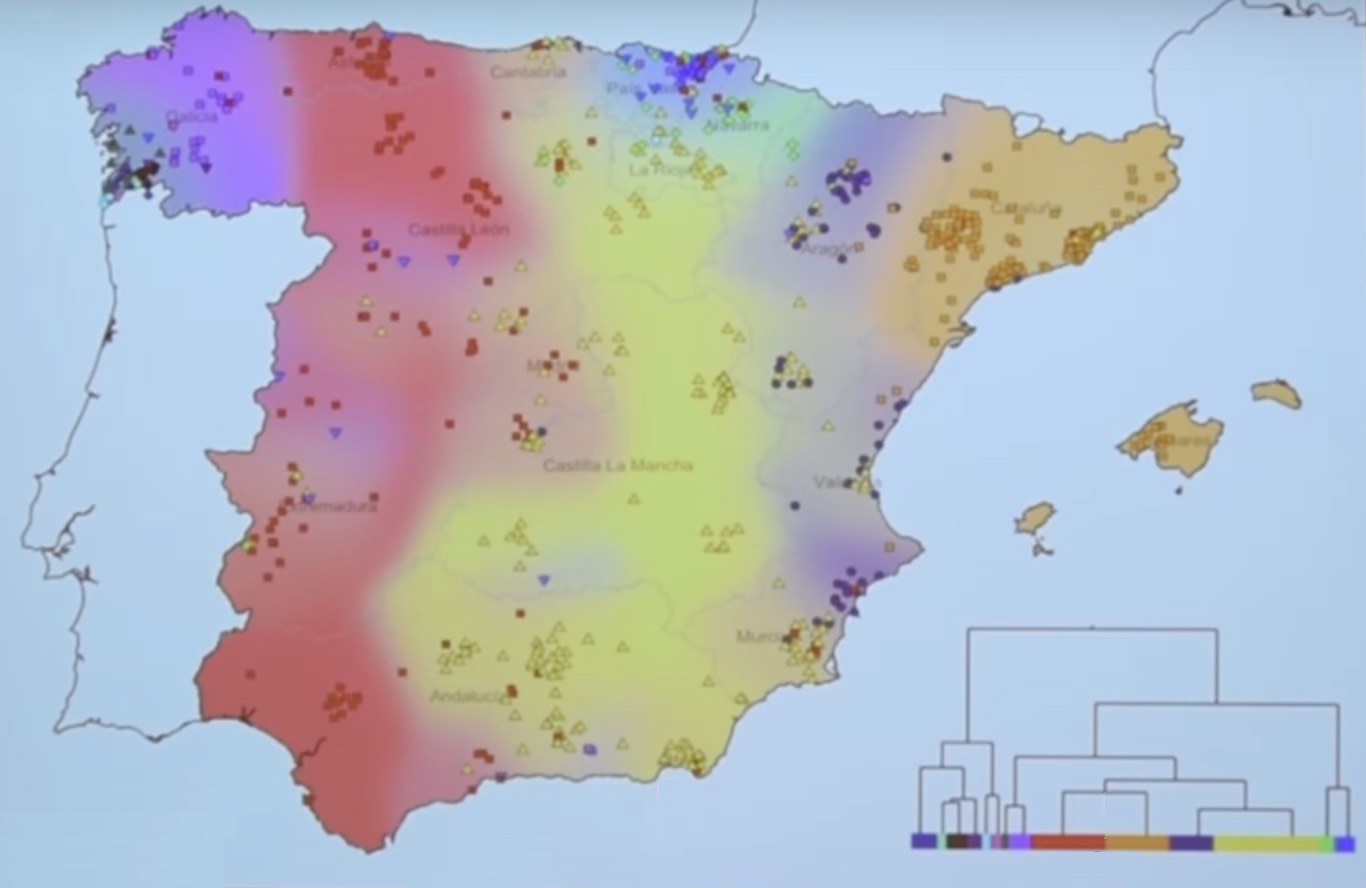A manuscript co-authored by Angel Carracedo, from the University of Santiago de Compostela, and (always according to him) pre-accepted in Nature, will offer more insight into the population substructure of Spain, based on autosomal DNA.
Carracedo’s lecture about DNA (in Galician), including his summary of the paper (from december 2017):
Some of the points made in the video:
- The study shows a situation parallelling – as expected – the expansion of Spanish Medieval kingdoms during the Reconquista (and subsequent repopulation).
- In it, the biggest surprise seems to be the greater substructure found in Galicia, the north-western Spanish territory – greater even than expected by the authors.
- As a side note, Galicia shows a great influence from “Moorish” ancestral components, due mainly to the influx from Portugal, which shows more.
It is difficult to judge only from the image and his words, but one could say that there are:
- Certain quite old ancestral Galician groups;
- then two – also quite old – ancestral Basque groups;
- then more recent Galician groups;
- and then a common, central Spanish group – including
- a wider Asturian-Catalan group, with a western Asturian-Leonese, and an eastern Catalan subgroup;
- and a central Castillian-Aragonese group, also with a western Castillian, and an eastern Aragonese subgroup.
- and then a common, central Spanish group – including
- then more recent Galician groups;
- then two – also quite old – ancestral Basque groups;

We thought that certain parts of the British Isles could show ancestral components related to the old population, although this has not proven exactly right, due to more recent population expansions.
However, this paper might shed light to the controversy surrounding Lusitanian (possibly Gallaico-Lusitanian) as a Pre-Celtic Indo-European group of Iberia, either slightly older as an Italo-Celtic dialect, or potentially from the Bell Beaker expansion, whose genetic imprint might have survived the Roman conquest, which apparently didn’t replace its ancestral population.
Given the presence of a central Spanish group opposed to the other minor groups – and knowing that (at least part of) the Medieval kingdoms should be related to the Occitan region – due to the Celtic expansion, and also potentially later during the Visigothic Kingdom, and the Carolingian Empire – , we can only guess that the other (north-western and Basque) groups are potentially quite old, and reflect prehistoric population structures.
Just speculating here, of course. Another interesting genetic paper to await…
Seen first in the Facebook group Iberia ADN.
Related:
- Analysis of R1b-DF27 haplogroups in modern populations adds new information that contrasts with ‘steppe admixture’ results
- Migrations painted by Irish and Scottish genetic clusters, and their relationship with British and European ones
- Y-DNA relevant in the postgenomic era, mtDNA study of Iron Age Italic population, and reconstructing the genetic history of Italians
- The Tollense Valley battlefield: the North European ‘Trojan war’ that hints to western Balto-Slavic origins
- Olalde et al. and Mathieson et al. (Nature 2018): R1b-L23 dominates Bell Beaker and Yamna, R1a-M417 resurges in East-Central Europe during the Bronze Age